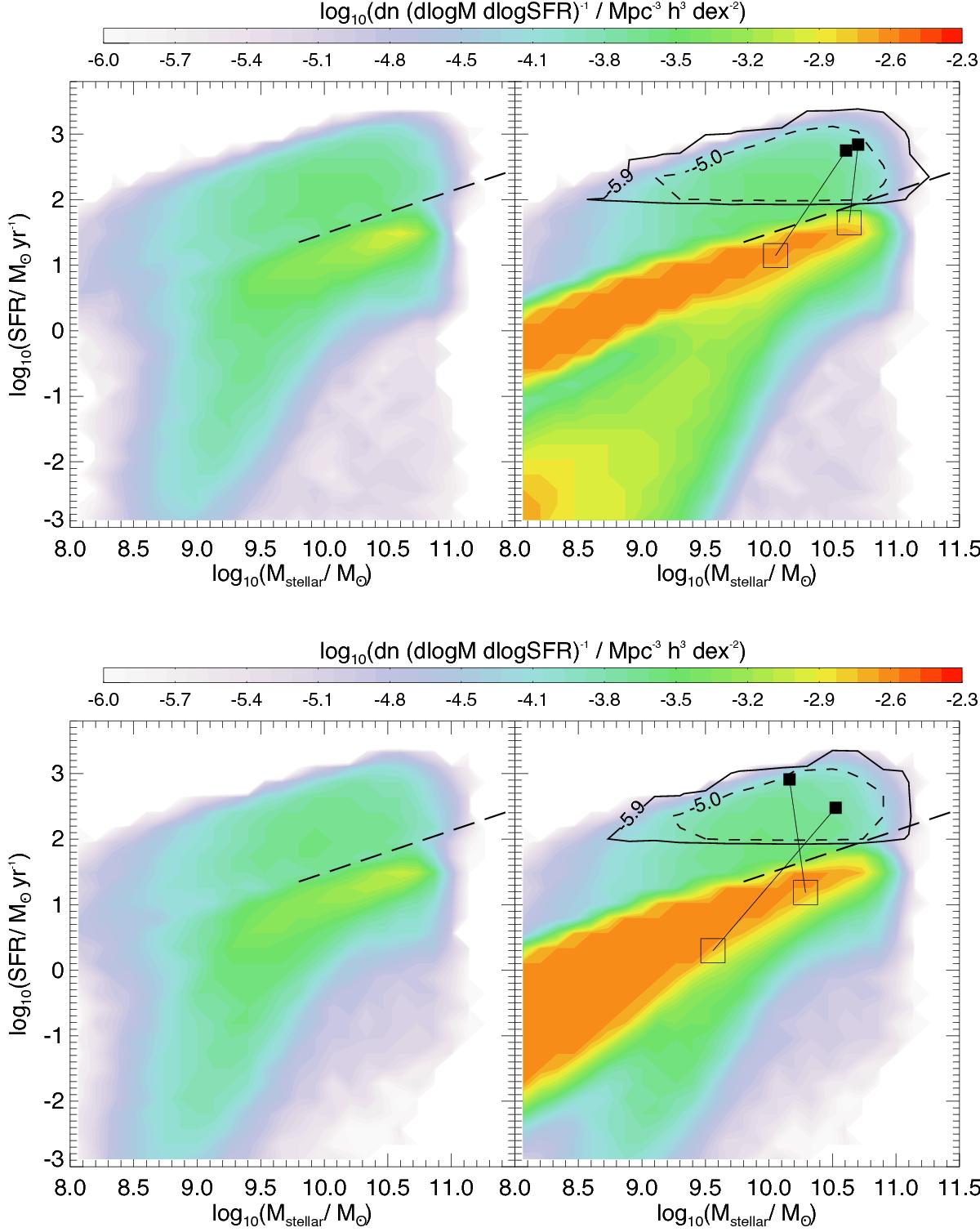Fig. 3

Top panels: SFR-M⋆ plane at z = 2.8 for the Gonzalez-Perez14 model. Both panels show as coloured contours the number densities of quasars with luminosities in the Bj band >1044.5 erg s-1 (left panel) and of all galaxies in the model (right panel). Number densities correspond to the number per volume, per unit logM⋆ and logSFR (as indicated by the colour bar). The dashed black line indicates the main sequence of star-forming galaxies at a redshift 2 <z< 2.5 (Tacconi et al. 2013). In addition, we show in the right panel as black contours the number density of all galaxies with SFR> 100 M⊙ yr-1 that are at <250 kpc physical distance of a bright quasar (LBj> 1044.5 erg s-1). Solid and dashed contours show the number densities of 10-5.9 and 10-5 Mpc-3h3 dex-2. These number densities are equivalent to ≈2 and ≈16 galaxies in the simulated volume, respectively. This figure shows that the subset of highly star-forming galaxies living nearby bright quasars are about a tenth of all the highly star-forming galaxies. In the right panel we show two examples of quasar–companion galaxy pairs indicated by empty (quasar) and filled (companion) squares. These pairs are very similar to SMM J04135+10277, they have an integrated SFR> 300 M⊙ yr-1 and the distance between the components is <50 kpc. Bottom panels: as in the top panels but for a variant of the Gonzalez-Perez14.GRP model.
Current usage metrics show cumulative count of Article Views (full-text article views including HTML views, PDF and ePub downloads, according to the available data) and Abstracts Views on Vision4Press platform.
Data correspond to usage on the plateform after 2015. The current usage metrics is available 48-96 hours after online publication and is updated daily on week days.
Initial download of the metrics may take a while.




